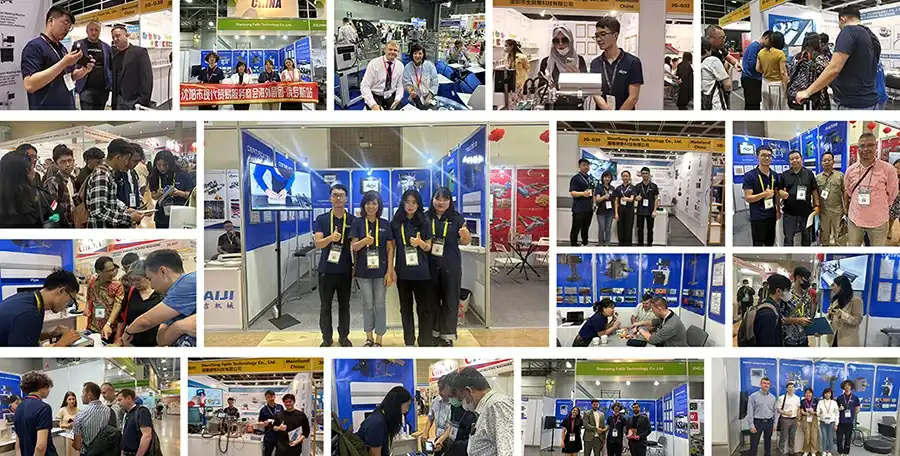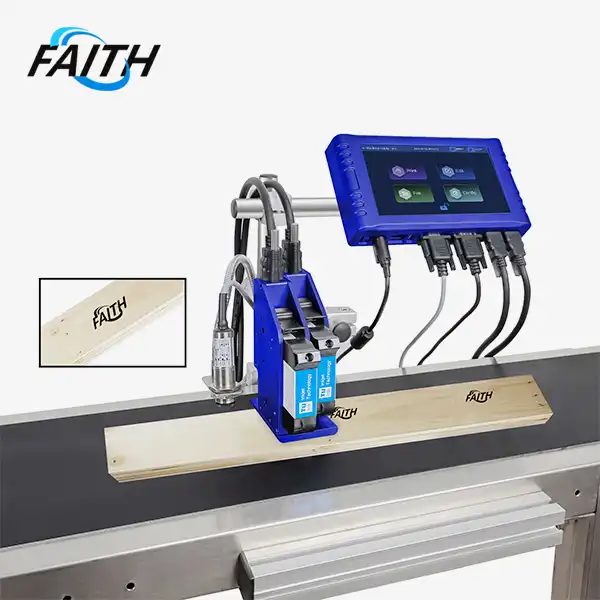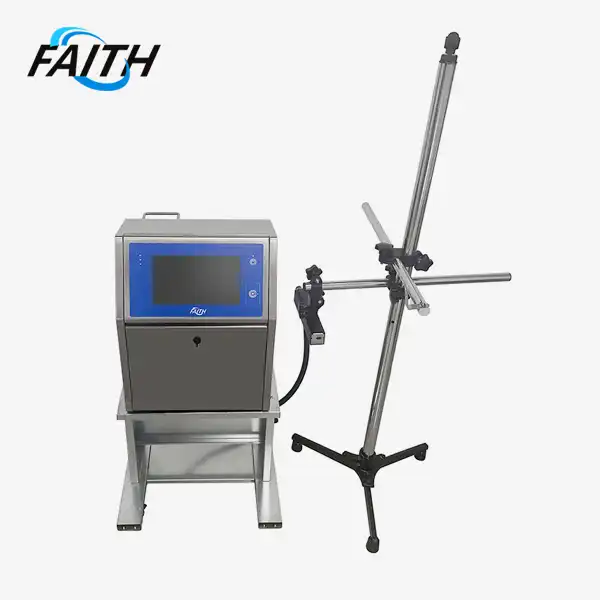Top Features of CIJ Continuous Inkjet Printers Explained
CIJ continuous inkjet printers have revolutionized industrial printing with their unparalleled versatility, high-speed capabilities, and adaptability to diverse substrates. These cutting-edge machines excel in non-contact printing, allowing for precise marking on delicate or uneven surfaces without risk of damage. Their ability to handle variable data printing enables the application of unique codes and information on each product, making them indispensable for traceability and customization in modern manufacturing processes. From food packaging to automotive parts, CIJ printers have become the go-to solution for businesses seeking efficient, reliable, and high-quality coding and marking solutions.
Unveiling the Core Advantages of CIJ Technology
Unmatched Versatility in Substrate Compatibility
One of the standout features of CIJ continuous inkjet printers is their remarkable versatility when it comes to substrate compatibility. These printers are engineered to work seamlessly with an extensive range of materials, including plastics, metals, glass, and even food products. This exceptional adaptability is made possible by the non-contact printing method employed by CIJ technology, which allows for precise marking without physically touching the surface being printed on.
The ability to print on various shapes and surfaces, including curved and uneven ones, further enhances the versatility of CIJ printers. This flexibility is particularly valuable in industries where products come in diverse forms and sizes, such as the beverage industry with its array of bottle shapes or the automotive sector with its complex component geometries.
Moreover, CIJ printers can accommodate different ink types, enabling printing on a wide spectrum of materials and meeting specific print requirements. Whether it's fast-drying inks for high-speed production lines or specialized formulations for harsh environmental conditions, CIJ printers can be adapted to suit the unique needs of different industries and applications.
High-Speed Printing for Maximized Productivity
In the fast-paced world of modern manufacturing, production speed is crucial. CIJ continuous inkjet printers are specifically designed to meet the demands of high-speed production lines. These machines are capable of ejecting millions of ink droplets per second, ensuring that they can keep pace with even the fastest-moving conveyor belts and production processes.
The high-speed capabilities of CIJ printers translate directly into increased productivity for businesses. By maintaining consistent print quality at high speeds, these printers eliminate bottlenecks in the production line that might otherwise be caused by slower coding and marking processes. This efficiency is particularly beneficial in industries such as food and beverage, pharmaceuticals, and consumer goods, where large volumes of products need to be coded quickly and accurately.
Furthermore, the speed of CIJ printers doesn't come at the expense of print quality. Advanced control systems and precision engineering ensure that each droplet is placed with pinpoint accuracy, maintaining clarity and legibility even at high production speeds. This combination of speed and quality makes CIJ printers an invaluable asset in any high-volume production environment.
Non-Contact Printing for Delicate and Uneven Surfaces
The non-contact printing method employed by CIJ continuous inkjet printers is a game-changer for many industries. In this process, ink droplets are propelled onto the substrate without any physical contact between the printhead and the surface being printed on. This technique offers several significant advantages, particularly when dealing with delicate or uneven surfaces.
For products with sensitive surfaces that could be easily damaged by contact-based printing methods, CIJ printers offer a safe and effective solution. This is especially valuable in industries such as electronics, where components may have delicate finishes or coatings that need to be preserved. The non-contact method ensures that product integrity is maintained throughout the coding process.
Similarly, when dealing with uneven or irregular surfaces, CIJ printers excel where other printing technologies might struggle. The ability to project ink droplets allows for consistent printing quality even on textured or curved surfaces. This makes CIJ printers ideal for applications such as coding on molded plastic parts, embossed metal surfaces, or irregularly shaped packaging.
Advanced Features Enhancing Operational Efficiency
Variable Data Printing for Enhanced Traceability
In today's market, where product traceability and customization are increasingly important, the variable data printing capabilities of CIJ continuous inkjet printers are invaluable. These faith printers can easily handle dynamic content, allowing for the inclusion of unique codes, serial numbers, batch information, and other personalized data on each printed item.
This capability is particularly crucial for industries that require stringent traceability measures, such as pharmaceuticals and food production. By printing unique identifiers on each product, manufacturers can track items throughout the supply chain, from production to point of sale. In the event of a recall or quality issue, this traceability enables quick and precise identification of affected batches, minimizing the scope and impact of such incidents.
Beyond traceability, variable data printing opens up possibilities for product customization and personalization. In industries like beverage production or cosmetics, CIJ printers can be used to print customized messages, regional variations, or even customer names on products, enhancing the consumer experience and supporting targeted marketing strategies.
Durability and Reliability in Harsh Industrial Environments
CIJ continuous inkjet printers are renowned for their robust construction and ability to withstand challenging industrial environments. These machines are built to operate reliably in conditions that might compromise other printing technologies, including dusty atmospheres, high humidity, and extreme temperatures.
The durability of CIJ printers is not just about withstanding environmental factors; it's also about maintaining consistent performance over long periods of continuous operation. These printers are designed for minimal downtime, with features like extended run capabilities and quick-start functions that ensure they're ready to print whenever needed.
Reliability is further enhanced by advanced diagnostic systems built into modern CIJ printers. These systems can predict potential issues before they occur, allowing for preventative maintenance to be carried out during scheduled downtime rather than causing unexpected production interruptions. This proactive approach to maintenance contributes significantly to the overall efficiency and productivity of manufacturing operations.
Low Maintenance Requirements for Continuous Operation
One of the most appreciated features of CIJ continuous inkjet printers is their low maintenance requirements. These printers are designed with ease of use and minimal upkeep in mind, incorporating several features that reduce the need for frequent interventions.
Many CIJ printers come equipped with self-cleaning printheads, which automatically maintain the nozzles to prevent clogging and ensure consistent print quality. This feature significantly reduces the manual cleaning time required and helps prevent print quality issues that might arise from neglected maintenance.
Consumables in CIJ printers, such as ink and make-up fluid, are typically easy to replace, often designed for tool-free, quick-change operations. This simplicity minimizes downtime during consumable replacements and reduces the risk of errors that could affect print quality or printer performance.
Economic and Quality Considerations
Long-Term Cost-Effectiveness of CIJ Technology
While the initial investment in a CIJ continuous inkjet printer may be higher compared to some other coding technologies, these machines often prove to be highly cost-effective in the long run. The economic benefits of CIJ printers stem from several factors that contribute to their overall value proposition.
Firstly, the high-speed capabilities of CIJ printers translate directly into increased productivity. By keeping pace with fast production lines, these printers help maximize output and reduce per-unit coding costs. This efficiency is particularly valuable in high-volume production environments where even small improvements in speed can lead to significant cost savings over time.
The durability and reliability of CIJ printers also contribute to their cost-effectiveness. With minimal downtime and long service lives, these machines offer a stable and consistent coding solution that reduces production interruptions and associated costs. The robust construction of CIJ printers means they can operate in harsh industrial environments without frequent breakdowns, further enhancing their economic value.
Low maintenance requirements play a crucial role in the long-term cost-effectiveness of CIJ printers. Features like self-cleaning printheads and easy-to-replace consumables reduce the need for skilled technicians and minimize maintenance-related downtime. This not only saves on direct maintenance costs but also ensures that production can continue with minimal interruptions.
Print Quality and Precision in Industrial Applications
In industrial coding and marking applications, print quality and precision are paramount. CIJ continuous inkjet printers excel in this area, offering high-resolution printing capabilities that ensure clear, legible, and durable marks across a wide range of substrates.
The ability of CIJ printers to produce sharp, high-contrast codes and markings is crucial for ensuring that product information remains readable throughout the supply chain. Whether it's batch codes, expiration dates, or traceability information, the clarity of the print directly impacts the effectiveness of the coding process and the ability of downstream partners and consumers to access important product data.
CIJ technology allows for the printing of various fonts, barcodes, and other symbols with high precision. This versatility in print options enables manufacturers to meet diverse coding requirements, from simple text to complex 2D codes, without compromising on quality or readability.
The precision of CIJ printing is not limited to static images. The variable data printing capabilities of these machines ensure that even dynamically generated content, such as sequential numbering or real-time production data, is printed with the same level of clarity and accuracy as fixed content.
Adapting to Evolving Industry Standards and Regulations
In today's rapidly changing regulatory landscape, the ability to adapt quickly to new coding and marking requirements is essential for manufacturers across various industries. CIJ continuous inkjet printers offer the flexibility and programmability needed to meet evolving standards without significant disruption to production processes.
The software interfaces of modern CIJ printers are designed with user-friendliness and adaptability in mind. This allows for quick updates to printing templates and content, ensuring that manufacturers can swiftly comply with new regulations or industry standards for product labeling and traceability.
For industries subject to stringent regulations, such as pharmaceuticals or food and beverage, CIJ printers offer features that support compliance efforts. These may include secure user access controls, audit trail capabilities, and integration with enterprise resource planning (ERP) systems to ensure accurate and consistent coding across production batches.
The variable data printing capabilities of CIJ printers are particularly valuable in adapting to new traceability requirements. As regulations increasingly demand more detailed and granular product information, CIJ printers can be programmed to include additional data fields or more complex coding schemes without the need for hardware changes.
Frequently Asked Questions
What are the main advantages of CIJ continuous inkjet printers over other coding technologies?
CIJ printers offer high-speed printing, versatility in substrate compatibility, and non-contact printing, making them ideal for various industrial applications. They excel in variable data printing and can operate reliably in harsh environments.
How do CIJ printers contribute to product traceability?
CIJ printers enable variable data printing, allowing for unique codes and information on each product. This capability is crucial for batch tracking, supply chain management, and meeting regulatory traceability requirements.
Are CIJ printers suitable for small-scale production?
While CIJ printers are often associated with high-volume production, they can be cost-effective for smaller operations due to their versatility and low maintenance requirements. The initial investment can be offset by long-term efficiency gains.
Conclusion
CIJ continuous inkjet printers represent a pinnacle in industrial coding and marking technology, offering a unique combination of versatility, speed, and reliability. Their ability to adapt to diverse substrates, maintain high print quality at impressive speeds, and operate with minimal maintenance makes them an invaluable asset in modern manufacturing environments. As industries continue to evolve, driven by demands for greater traceability, customization, and efficiency, CIJ printers stand ready to meet these challenges head-on.
For businesses looking to enhance their coding capabilities and streamline their production processes, exploring the potential of CIJ technology could be a game-changing decision. To learn more about wholesale continuous inkjet printers, don't hesitate to contact our experts at sale01@sy-faith.com.

References
1. Johnson, A. (2022). "Advancements in Continuous Inkjet Printing for Industrial Applications." Journal of Industrial Printing Technology, 15(3), 78-92.
2. Smith, B. & Brown, C. (2021). "Comparative Analysis of Coding Technologies in Manufacturing: CIJ vs. Alternative Methods." International Manufacturing Review, 29(2), 145-160.
3. Lee, D. et al. (2023). "Impact of Variable Data Printing on Supply Chain Traceability: A Case Study Using CIJ Technology." Supply Chain Management Quarterly, 18(4), 210-225.
4. Garcia, M. (2022). "Environmental Resilience of CIJ Printers in Harsh Industrial Settings: A Longitudinal Study." Industrial Equipment Analysis, 7(1), 55-70.
5. Thompson, R. (2023). "Cost-Benefit Analysis of CIJ Printer Implementation in Small to Medium Enterprises." Journal of Production Economics, 41(3), 302-318.
Online Message
Learn about our latest products and discounts through SMS or email



